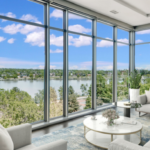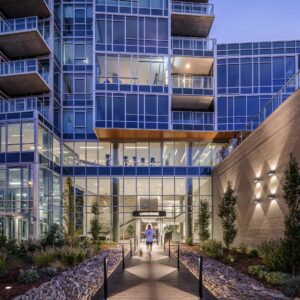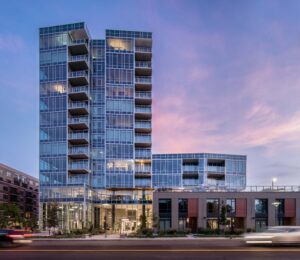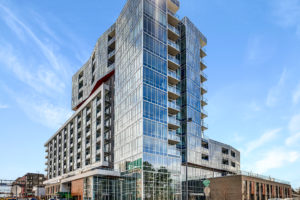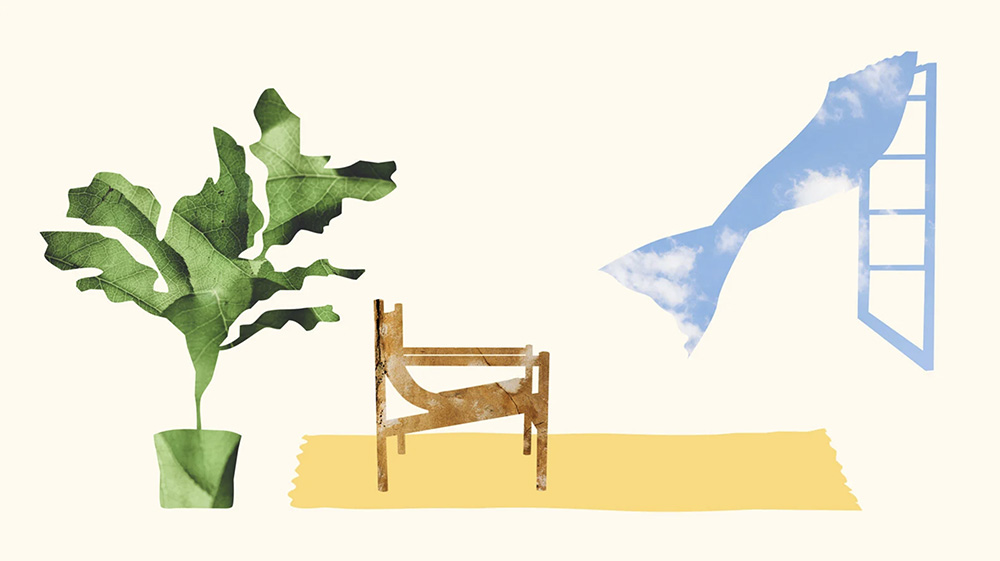
Biophilic design can make us healthier and more resilient to climate change.
Erin Rovalo was playing in a forest of cedar and Douglas fir near Tacoma, Washington, when she came upon a tree that changed her life.
“I have this very vivid memory from my childhood,” she says, “of finding one particular cedar tree that had these long branches that went all the way to the ground.” She and her friends found an opening in the dense greenery and discovered they could squeeze their way through. It was like a hidden door to a mysterious world under the tree’s canopy. The space smelled of “rich-soil earth” and was illuminated by sunlight filtered through the leaves, making patterns on the ground. Being there sparked Rovalo’s sense of wonder and imagination.
Rovalo, who’s vice president of the community department at the International Living Future Institute, is an expert in biomimicry, which looks to nature’s forms and processes to solve design challenges like reducing energy and water consumption, preserving ecosystems, and managing waste. In addition to sustainability, Rovalo is passionate about the psychological element of design inspired by nature. She believes indoor spaces can emulate the cedar tree she treasured — a place of beauty, refuge, and serenity.
“I remember in that moment really feeling like nature can almost be like a room or like a building,” says Rovalo. “Here I am 30 years later trying to make buildings more like nature.”
Bringing nature indoors could go a long way toward improving the country’s physical and mental health. Socio-economic factors like increased urbanization, indoor work, and inequities in access to green space lead Americans to spend 87 percent of their time in buildings, despite the fact research demonstrates that time spent in natural settings can reduce stress and improve physical and mental well-being. The outdoors has also become increasingly inaccessible because of climate change events such as wildfires, extreme temperatures, and storms. While the barriers to being outside must be addressed, social and natural scientists say that making our homes and offices look and feel more like nature can provide some of the benefits of actually being there. And with the right design, the indoors can be a place of refuge and resilience, too.
